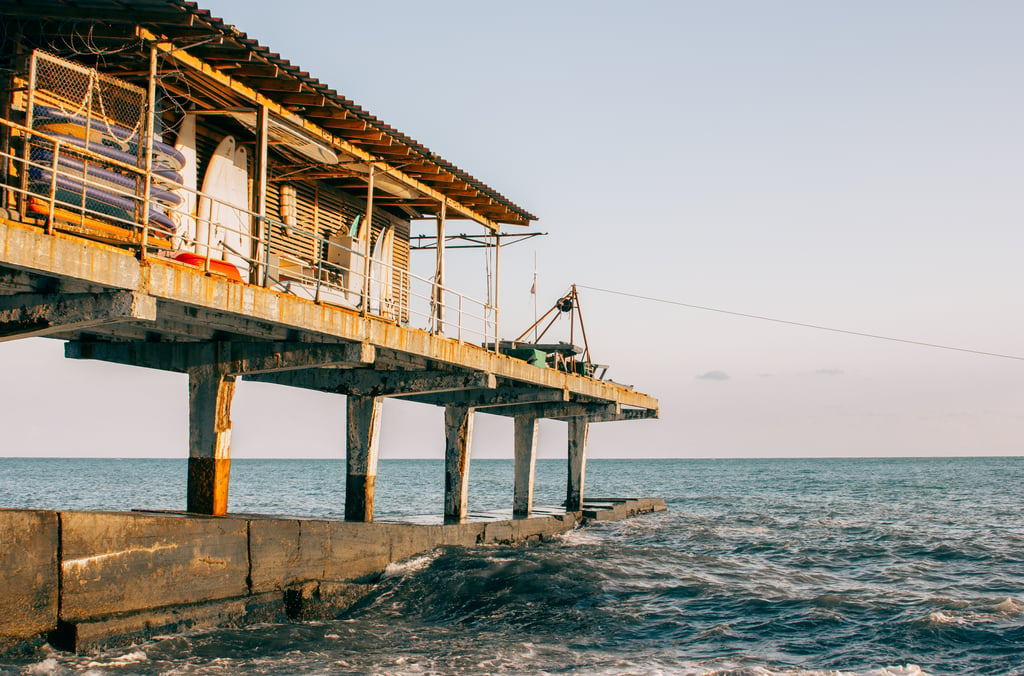Sea Level Rise Seawall Fort Lauderdale Design | Protect Property
Learn how sea level rise impacts seawall Fort Lauderdale design. Discover resilient strategies, material choices, and expert advice to safeguard your property.
SEAWALL INSPECTION
10/31/20253 min read


Seawall Inspection
How Rising Sea Levels Impact Seawall Design in Fort Lauderdale
Fort Lauderdale, with its extensive network of canals and coastal properties, faces growing challenges from rising sea levels. As ocean waters steadily increase due to climate change, traditional seawall designs are being put to the test.
Property owners, engineers, and local authorities are adapting strategies to ensure waterfront protection, structural stability, and long-term resilience.
Understanding how sea level rise affects seawall design is critical for safeguarding investments, preventing property damage, and maintaining shoreline integrity.
The Growing Challenge of Sea Level Rise
South Florida has experienced measurable sea level increases over the past decades, a trend expected to continue. Rising waters can accelerate erosion, increase flooding risk, and place additional pressure on existing seawalls.
Standard seawall designs, constructed decades ago, may no longer suffice against higher tides and more frequent storm surges. As a result, seawall builders and contractors are revising approaches, taking into account future projections and the evolving coastal landscape.
Climate adaptation has become a key component of seawall planning. Rather than merely reacting to current conditions, property owners and sea wall contractors now incorporate long-term strategies, ensuring that walls can withstand projected water levels for decades.
Key Considerations in Modern Seawall Design
1. Resilient Design Principles
Resilient design focuses on durability, adaptability, and long-term performance. Modern seawalls are constructed not just to resist water today but to accommodate anticipated changes over their lifespan. This includes:
Evaluating tidal and storm surge patterns
Incorporating flexible structures that can absorb environmental stresses
Planning for incremental upgrades as conditions change
Resilient seawalls are essential in Fort Lauderdale, where high property values and dense waterfront development demand reliable coastal protection.
2. Increased Height
One of the most straightforward responses to sea level rise is increasing the height of seawalls. Taller walls prevent overtopping during high tides or storm surges, reducing flooding and property damage. Sea wall contractors often recommend evaluating rising tide projections when determining the appropriate wall height. Careful planning ensures that walls remain effective for decades, even as water levels gradually increase.
3. Stronger Materials
Traditional seawall materials, such as untreated concrete or timber, may not endure prolonged exposure to higher water levels. Modern construction prioritizes stronger, more durable materials that resist erosion, saltwater corrosion, and environmental stress. Options include:
Reinforced concrete with protective coatings
Vinyl sheet piling
Steel or composite materials for high-impact zones
Choosing the right materials is critical for long-term performance, and professional seawall builders can advise on options suited to Fort Lauderdale’s coastal conditions.
4. Rising Tide Projections
Accurate projections of future sea levels are vital for seawall design. Engineers and contractors use historical data, climate models, and local environmental studies to estimate rising tide levels over 20–50 years. These projections guide decisions about wall height, material selection, and reinforcement methods. Integrating projected data ensures that new or upgraded seawalls remain effective even as conditions evolve.
5. Insurance Considerations
Rising sea levels impact insurance policies for waterfront properties. Homes with insufficiently designed seawalls may face higher premiums or reduced coverage. Ensuring your seawall meets modern design standards not only protects your property physically but also helps maintain compliance with insurance requirements. Consulting with insurance providers during the design or upgrade process is a proactive approach to mitigating financial risks.
Balancing DIY Efforts and Professional Expertise
While some maintenance and minor repairs can be handled by property owners, major upgrades to accommodate sea level rise require professional involvement. Attempting structural changes without expertise can compromise safety and lead to costly mistakes. By combining routine inspections and DIY upkeep with professional seawall construction and reinforcement, homeowners achieve the best long-term outcomes.
Long-Term Benefits of Adapted Seawall Design
Investing in seawalls that consider sea level rise offers multiple advantages:
Enhanced protection from flooding and storm damage
Reduced long-term maintenance costs
Compliance with insurance and municipal regulations
Increased property value and marketability
Peace of mind knowing your waterfront investment is secure
Forward-thinking seawall design ensures that properties remain safeguarded for decades, even as coastal conditions change.
Planning for the Future
As climate change continues to impact South Florida, seawall design will increasingly incorporate adaptive strategies. Homeowners and builders must account for rising waters, stronger storms, and evolving coastal regulations. By prioritizing resilient design, stronger materials, and professional expertise, Fort Lauderdale property owners can protect their waterfront investments effectively.
FAQs
1. How does sea level rise affect seawall design in Fort Lauderdale?
Rising waters increase erosion, flooding risk, and hydrostatic pressure, requiring higher walls, stronger materials, and resilient design strategies.
2. What is resilient seawall design?
Resilient design ensures the wall can withstand environmental stresses over time, including rising tides, storms, and erosion.
3. Can I upgrade my seawall to handle higher sea levels?
Yes. Sea wall contractors can assess current conditions, recommend increased height, stronger materials, and reinforcement methods based on projections.
4. How do rising tide projections influence seawall construction?
Projections guide decisions about wall height, material selection, and structural reinforcement to ensure long-term effectiveness.
5. Do insurance policies require updated seawall design?
Properties with outdated walls may face higher premiums or reduced coverage. Upgraded walls designed for sea level rise can improve compliance and reduce financial risks.
Search
Is your seawall secure?
Don't wait for a small problem to become a disaster. Get a professional evaluation.
Innovation
Renovating seawalls with modern technology and materials.
Quality
Strength
© 2024. All rights reserved.
